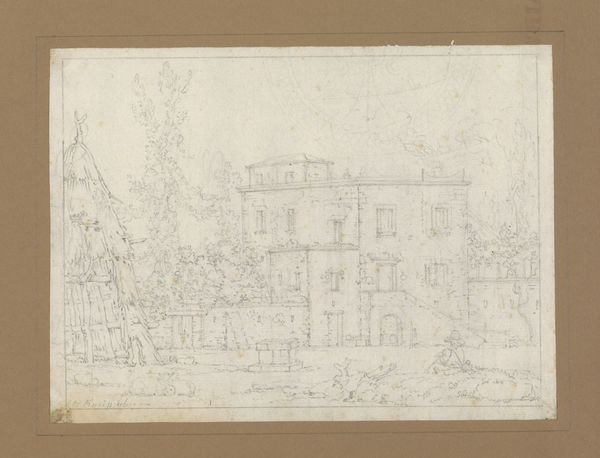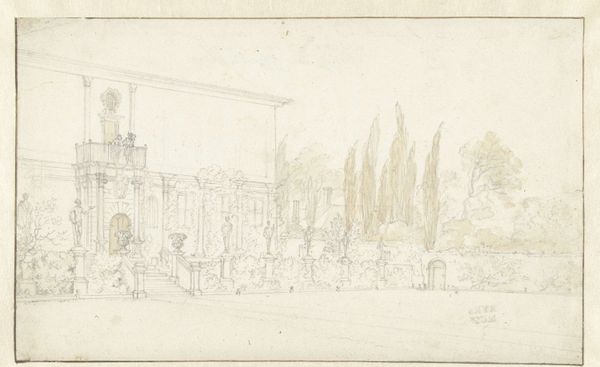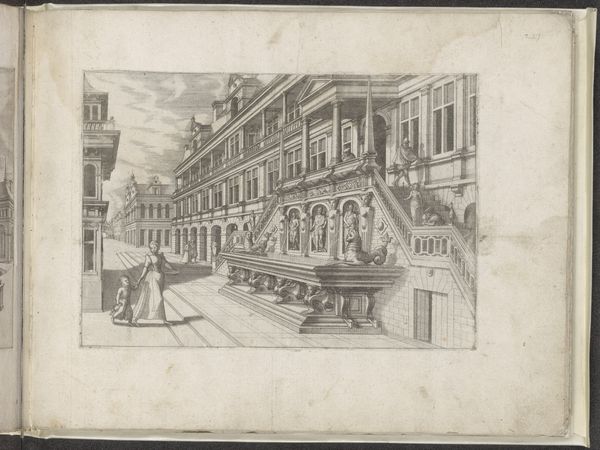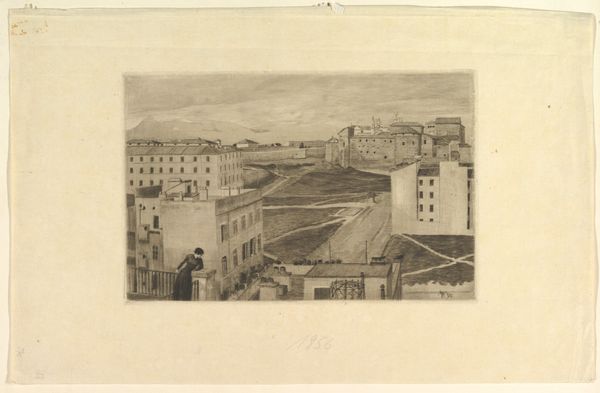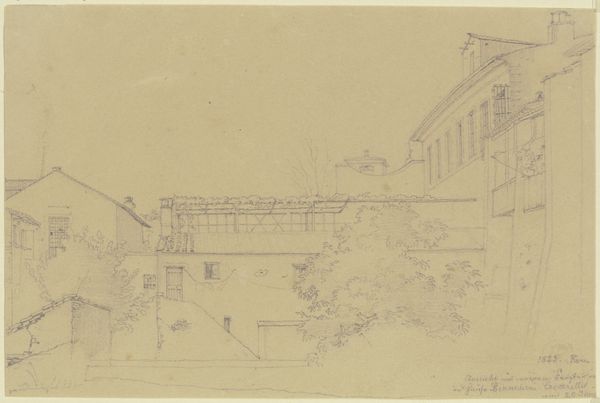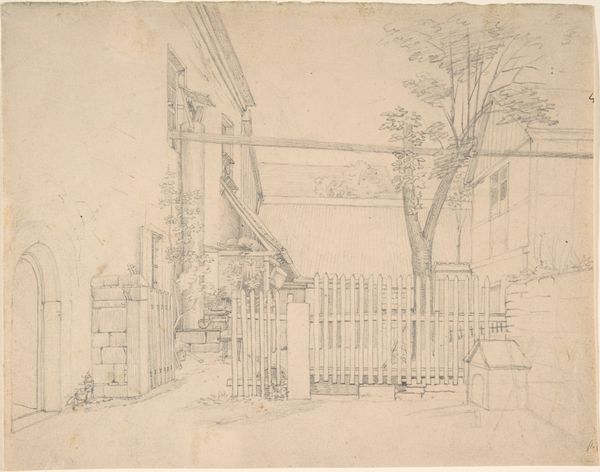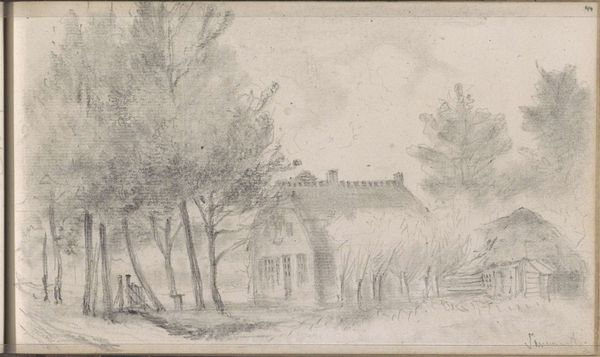
View of the Garden Terrace of the Villa d'Este at Tivoli 1643 - 1644
0:00
0:00
drawing, ink, pencil, pen, architecture
#
drawing
#
garden
#
landscape
#
etching
#
ink
#
pencil
#
pen
#
cityscape
#
watercolor
#
architecture
#
building
Dimensions: 13 7/16 x 18 9/16 in. (34.1 x 47.1 cm)
Copyright: Public Domain
Editor: Here we have Israel Silvestre's "View of the Garden Terrace of the Villa d'Este at Tivoli," created around 1643-1644, using pen, ink, pencil, and watercolor. There’s something so precise yet ethereal about the way he captured this garden. I’m curious, how do you interpret this work, especially considering its historical context? Curator: It’s a fascinating snapshot of power and control over nature, isn't it? The Villa d'Este was commissioned by a Cardinal, a high-ranking member of the Catholic Church, at a time when the Church wielded immense social and political power. What do you notice about the relationship between the architecture and the natural elements in the drawing? Editor: Well, the architecture is very rigid and structured, whereas the garden, while clearly designed, appears more organic and free-flowing, but in a specific way, maybe like a "carefully un-cared for" situation. Curator: Exactly. It reflects a hierarchical view of the world, doesn't it? Nature is being molded and shaped to reflect human ideals and to display status and privilege. These gardens were exclusive spaces, enjoyed primarily by the elite, embodying a visual language of exclusion. Does understanding this context shift your initial feelings about the work? Editor: It does. Knowing that it represents this kind of societal control, makes me see it beyond just a beautiful scene. It raises questions about access and the stories that aren’t being told. It makes you wonder whose labor was exploited to build the very steps featured in this sketch. Curator: Precisely. It urges us to interrogate not only the beauty but also the power dynamics embedded within seemingly idyllic scenes. Editor: It really encourages a deeper reading of the work and its cultural implications. Curator: Absolutely. That's the power of contextualizing art within broader narratives.
Comments
No comments
Be the first to comment and join the conversation on the ultimate creative platform.


